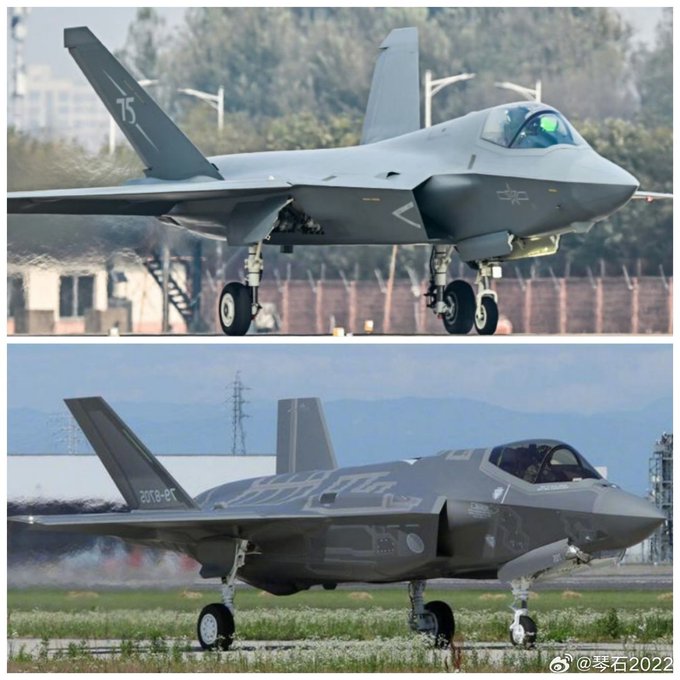China Releases First Official Image of Second Gen-5 Stealth Fighter, the J-35A
Previously only seen in unofficial photos, the first official image of the J-35A has been released ahead of its anticipated debut at the Airshow China, held at Zhuhai Airport in Guangdong Province from November 12.
(DEFENSE SECURITY ASIA) – China has officially released the first official image of its second fifth-generation stealth fighter, the Shenyang J-35A, after years of development.
Previously only seen in unofficial photos, the first official image of the J-35A has been released ahead of its anticipated debut at the Airshow China, held at Zhuhai Airport in Guangdong Province from November 12.
The release of the J-35A’s official image offers analysts a rare glimpse into China’s latest air power asset, signaling an enhancement in the country’s military capabilities.
This second fifth-generation fighter is seen as a strategic effort by Beijing to compete with the United States in the realm of stealth and fifth-generation fighter technology while modernizing its military forces.
Designed for both air-to-air and air-to-ground combat, the J-35A makes China the second country after the United States to develop two types of fifth-generation fighters—the J-35A and the J-20 “Mighty Dragon.”

The United States also has two fifth-generation stealth fighters: the F-35 and the F-22 “Raptor.”
The official image reveals several new details about the J-35A, previously unseen, enabling military observers to compare this latest version with the earlier FC-31 variant, as well as with other fifth-generation fighters.
Speculation has long surrounded the design similarities between the J-35A/FC-31 and the American-made F-35 by Lockheed Martin, with some alleging China may have mimicked the American jet via industrial espionage during its development phase.
However, these allegations remain unproven, and experts suggest that replicating a sophisticated aircraft like the F-35 would be exceedingly difficult.
The image shows that the J-35A is equipped with an Electro-Optical Targeting System, similar to the F-35, and a radar-reflective Luneburg lens under its fuselage.

China has also reportedly designated the J-35A as a land-based variant, while the carrier-based variant will be called the J-35, and an export model will retain the FC-31 designation.
This mirrors the F-35, which has three versions: the land-based F-35A, the short takeoff/vertical landing (VSTOL) F-35B, and the carrier-based F-35C.
According to military analyst Wang Mingzhi, the J-20 “Mighty Dragon” is classified as a heavy-duty stealth fighter, while the J-35A is considered a medium-duty aircraft.
He also noted that the Chinese PLA Air Force (PLAAF) now possesses two types of stealth fighter jets, marking that China’s air power is rapidly evolving towards stealth capabilities.
“A range of mission combinations can be anticipated in future operations. Additionally, a significant trend will be the pairing of stealth fighter jets with unmanned aerial vehicles (UAVs).”
“This symbolizes a key development in aerial warfare: the synergy between manned and unmanned systems.”
“The J-20 focuses on air superiority missions, whereas the J-35A is a versatile fighter capable of both air dominance and various ground and maritime strike missions,” he said.

In future operations, both stealth fighters will have the precision-strike capabilities needed for coordinated missions, enhancing China’s air superiority.
A lead expert at the Shenyang Aircraft Design and Research Institute of the Aviation Industry Corporation of China (AVIC) confirmed that the J-35 is part of a broader fighter family, with various variants designed for the Chinese Air Force and Navy.
“Thanks to the re-use of technologies, the new aircraft features highly mature technology and system, which in turn improve its reliability.”
“The “A” in the J-35A denotes its capability status, indicating a phase in its development, which is still underway and in order.” — DSA



Comments are closed.